What the past can teach us about business today
Since 20/20 is considered hindsight and we’re all reassessing how we do everything, there has never been a better time to look back and see what we can learn from the women who have come before us. You’d be surprised what they can teach us and how much of their advice is still relevant today. I was.
One of the advantages of (my formerly) long commute is I listen to a lot of audio books and podcasts. With an hour and a half minimum drive each way, I tend to binge listen to those podcasts. I was recently listening to Stuff You Missed in History Class (MissedinHistory.com) an their November 11, 2019, podcast on Francis Benjamin Johnston, the first professional female photographer. I highly recommend the episode, and all of their podcasts to you. What struck me about this particular episode is Fanny Johnson wrote an article in 1897 for the Ladies Home Journal titled What a Woman Can Do With A Camera. What does a woman from the late 1800’s have to teach us about  business? Surprisingly, a lot. Some business truths are universal and timeless.
business? Surprisingly, a lot. Some business truths are universal and timeless.
Much of the article focuses on the craft of being a professional photographer, but a good portion also focuses on what it takes to be a woman in business. You can find a full reprint of the article at https://www.cliohistory.org/exhibits/johnston/whatawomancando/ The article was so insightful it was re-run in its entirety a year later in a general photograph magazine (the guys didn’t want to miss out on her advice). Her tips are still relevant 123 years later.
I’m going to give you the roughest thumbnail of who Fanny Johnston was. For more details, please check out Stuff You Missed in History Class’s amazing podcast on her.
Frances Benjamin Johnston (January 15, 1864 – May 16, 1952) was an early American photographer and photojournalist who is most known for 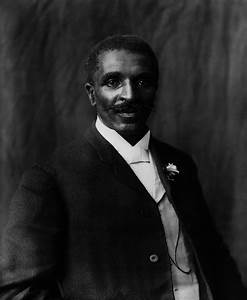 her portraits, images of southern architecture, and various photographic series featuring African Americans and Native Americans at the turn of the 20th century. Fannie’s family was well connected in Washington, DC and Fannie was able to leverage those relationships into an amazing career. While she didn’t identify as a “suffragette,” Fannie’s independence and career was a-typical of her time, and she embodied much of the concept of the “New Woman.” Her self-portraits often depicted her in slacks or in non-traditional poses. Her 1897 article is a blue print for women starting their own photography businesses (and businesses in general). Here are her business tips.
her portraits, images of southern architecture, and various photographic series featuring African Americans and Native Americans at the turn of the 20th century. Fannie’s family was well connected in Washington, DC and Fannie was able to leverage those relationships into an amazing career. While she didn’t identify as a “suffragette,” Fannie’s independence and career was a-typical of her time, and she embodied much of the concept of the “New Woman.” Her self-portraits often depicted her in slacks or in non-traditional poses. Her 1897 article is a blue print for women starting their own photography businesses (and businesses in general). Here are her business tips.
TIP 1: Choose a business suited to you if you want to be profitable.
Fannie says:
In order to solve successfully the problem of making a business profitable, the woman who either must or will earn her own living needs to discover a field of work for which there is a good demand, in which there is not too great competition, and which her individual tastes render in some way congenial.
There are many young women who have had a thorough art-training, whose talents do not lift their work above mediocrity, and so it is made profitless; others who, as amateurs, have dabbled a little in photography, and who would like to turn an agreeable pastime into more serious effort; while still another class might find this line of work pleasant and lucrative, where employment in the more restricted fields of typewriting, stenography, clerking, bookkeeping etc., would prove wearing and uncongenial to them.
From the start, Fannie is talking money. She’s focused on how to make  her and other woman’s businesses profitable. Many people shy away from talking money. You must get comfortable talking money to run a profitable business. By focusing on profitability from the very first line, Fannie is emphasizing a critical point in business. We’re here to make a profit. Making that profit allows us to fund our lives, hire employees, and make an impact on our community. Profit is not a dirty word. If you’re business isn’t making a profit, it’s not a business.
her and other woman’s businesses profitable. Many people shy away from talking money. You must get comfortable talking money to run a profitable business. By focusing on profitability from the very first line, Fannie is emphasizing a critical point in business. We’re here to make a profit. Making that profit allows us to fund our lives, hire employees, and make an impact on our community. Profit is not a dirty word. If you’re business isn’t making a profit, it’s not a business.
In Fannie’s opinion to make a business profitable, business owners must find the line of work “pleasant” and “congenial” to them. Does this sound familiar? It should. We’re constantly told to “to what we love” for our business, to use our hobbies as the springboard for our businesses. Over 123 years later, the words are different but the sentiment and wisdom behind them are the exact same.
TIP 2: Patience and hard work are they keys to profitability
In discussing the secret of success, Fannie said (with a few changes in parenthetical from me);
The prime requisites—as summed up in my mind after long experience and thought—are these: The woman who makes (a business) profitable must have, as to personal qualities, good common sense, unlimited patience to
carry her through endless failures, equally unlimited tact, good taste, a quick eye, a talent for detail, and a genius for hard work. In addition, she needs training, experience, some capital, and a field to exploit. This may seem, at first glance, an appalling list, but it is incomplete rather than exaggerated; although to an energetic, ambitious woman with even ordinary opportunities, success is always possible, and hard, intelligent and conscientious work seldom fails to develop small beginnings into large results.
So, in a nutshell, have patience, take action, work hard, and weather the setbacks. “Success is always possible.”
TIP 3: Price your work appropriately.
Women struggle with how to price their services. We’ve all heard the report that women still make less than men for the same work. Not surprisingly, Fannie had thoughts on pricing as well. She said, “Good work should command good prices, and the wise woman will place a paying values upon her best efforts. It is a mistaken business policy to try and build up trade by doing something badly cheaper than somebody else.” Read that again.
You don’t build a successful business by merely doing the work cheaper than someone else. Underbidding is the surest way to the poor house. Not only are you not being paid the value of the product you produce (no one can pay you what you are worth. You are priceless), you are going into time debt.
If I only charge you $500 for a task that I should charge you $1500 for, there are only a few outcomes possible: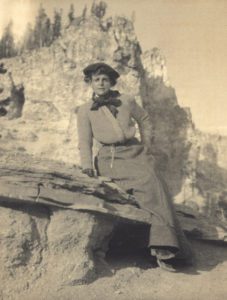
- I spent 1/3 of the time on the work and you get an inferior product or service;
- I spend the full amount of the time on the project, but then don’t have time for more profitable work meaning I’m always struggling to stay afloat;
- I spend the full amount of time on the project, and then work myself to exhaustion doing more of these jobs at the wrong price to make the money I need; or
- I do the work, can’t pay my bills, close my business and get a job.
Does anyone think any of those options makes for a good result for your client or you? I hope not.
Know what your competitors are charging. Know what it costs you to produce the result you’ve promised both in monetary costs and time costs. Price accordingly. Your clients will pay you, even pay you a premium, for consistently excellent work. Trust in that. Fannie did. And 123 years ago, she showed us that this works!
TIP 4: Don’t be a jerk.
Fannie advocates “tact.” Kevin J, Anderson’s, a many-times over best-selling novelist with over 100 books in print, modern take on this tip is, “Don’t be a jerk.” You can say “no” without being insulting.
You can and should guide your client away from a bad decision with tact and grace. I’ve had clients propose absolutely devastating courses of action. I talked them off those particular cliffs by asking questions like, “Why do you think that is the best choice for your business at this moment?” Often your client’ potentially bad decision is because they lack the information that they need to make a better choice, or they haven’t thought through the ramifications of their choice. Tactfully asking questions can help them see the better path through the minefield.
TIP 5: Your Network is Key

Okay, so Fannie’s article doesn’t discuss networking or how connections can rapidly accelerate your success, but I suspect she didn’t say this because she lived it. Every day. Her life is a testament to this fact.
She was given her first camera by entrepreneur George Eastman, a close friend of the family, and inventor of the new, lighter, Eastman Kodak cameras and film process. She received training in photography and dark-room techniques from Thomas Smillie, director of photography at the Smithsonian, also a family connection.
When she opened her DC studio, she took portraits of many famous contemporaries, including suffragette Susan B. Anthony, writer Mark Twain and Booker T. Washington, principal of the Tuskegee Institute. Well connected among elite society, she was commissioned by magazines to do “celebrity” portraits, such as Alice Roosevelt’s wedding portrait and was dubbed the “Photographer to the American court.” If you weren’t born with the connections Fannie was, you can create them. Network and connect. You can’t build your business sitting behind a computer screen. Go out and meet people.
TIP 6: A WOMAN ONLY NEEDS COURAGE
I can find no better words to end this post than Fannie’s own conclusion.
Above everything else be resourceful, doing your best with what you have until you are able to obtain what you would like. Resource, a good sense, a cultivated taste and hard work for a combination that seldom fails to success in a country like ours, where a woman needs only the courage to enter and profession suitable to her talents and within her powers of accomplishment.
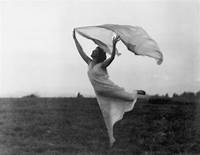
Success is always possible.
Even now in this challenging time.
Thanks Fannie.


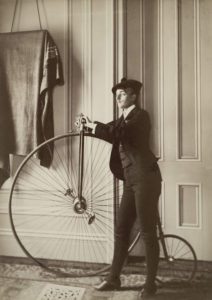
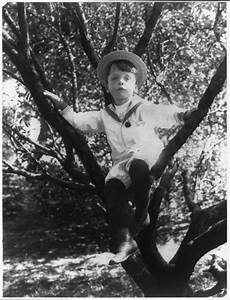 carry her through endless failures, equally unlimited tact, good taste, a quick eye, a talent for detail, and a genius for hard work. In addition, she needs training, experience, some capital, and a field to exploit. This may seem, at first glance, an appalling list, but it is incomplete rather than exaggerated; although to an energetic, ambitious woman with even ordinary opportunities, success is always possible, and hard, intelligent and conscientious work seldom fails to develop small beginnings into large results.
carry her through endless failures, equally unlimited tact, good taste, a quick eye, a talent for detail, and a genius for hard work. In addition, she needs training, experience, some capital, and a field to exploit. This may seem, at first glance, an appalling list, but it is incomplete rather than exaggerated; although to an energetic, ambitious woman with even ordinary opportunities, success is always possible, and hard, intelligent and conscientious work seldom fails to develop small beginnings into large results.